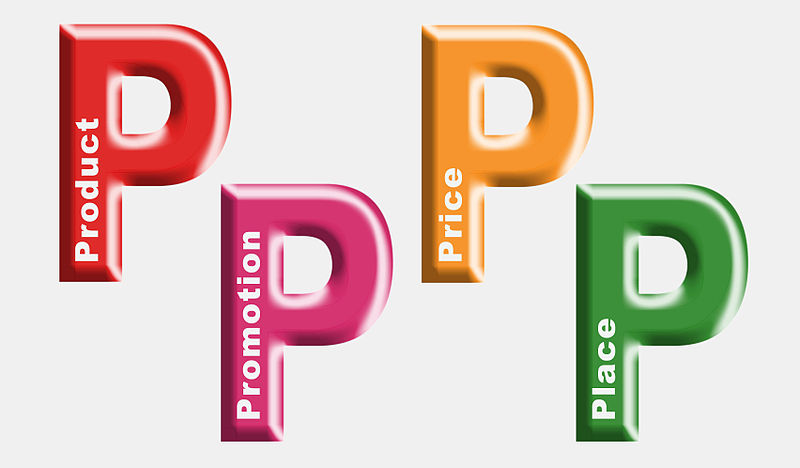blog
COVID-19 Transformed the Marketing Ps to Es
Estimated Reading Time: 6 minutes

The “4 P’s of Marketing” concept feels almost as old as marketing itself, harkening back to a simpler time when chalkboards were a marketing professor’s primary communication tool and virtual classrooms sounded like an impossibility. The world – at large as well as from a marketing standpoint – has changed. After undergoing a seismic shift that propelled both buyers and sellers to a digital-first world, marketers have instead adopted the four E’s, an updated mnemonic device that encapsulates how brands need to approach marketing from this point on.
In the post-COVID era of marketing, the passive components highlighted in the four P’s (product, price, promotion, and place) are no longer sufficient. Instead, the four E’s provide a proactive approach that puts the customer at the center of marketing and sales engagements.
“E” is for Experience + Engagement
With access to social media sites and 24-hour news via our computers, phones, and tablets plus the distractions of working from home, it’s no surprise that professionals only give 23% of their attention during online conference and video calls. As virtual and hybrid meetings and events are quickly becoming the norm, companies need to find ways to engage prospects online more effectively.
Now more than ever marketers are competing for the full attention of their customers. If marketers and sales teams want their products/solutions to be differentiated and be memorable during virtual events, they need to create emotional and cognitive connections. No one can be reasonably expected to simply absorb a list of product features and make a buying decision based on a comparison matrix; they need a more connective experience.
For some time now, the trend has been to recognize that more and more consumers no longer buy just products – they buy an experience. Starbucks Coffee stores, for example, are all about the experience. The customer experience starts well before they taste the coffee – starting with the welcoming scent of coffee beans as they walk in, the specifically selected colors and textures of the store, the friendliness of the baristas as they pen names on cups, and the curated playlist of the best coffeehouse tunes. Starbucks is the most successful coffeehouse chain in the world because of the consistent experience it creates for its customers.
In the B2B world, this same concept can be applied to the buying experience. Sales and marketing teams need to deliver to decision-makers a comprehensive, consistent, and elevated experience well beyond the focus of the product that they are buying. The most effective way to start that experience is to put the customer in the “driver’s seat” – letting them control the pace and direction of the experience so that they can discover the company’s unique value differentiation for themselves. Research has shown that this customer’s “self-discovery” is a more impactful way of learning and understanding. Focusing on delivering this experience will allow the company to stand out in even the most competitive market.
“E” is also for Exchange of Value
While price will always be a factor, it shouldn’t be the deciding factor when it comes to buying complex solutions. When prospects don’t understand the value of a feature, product, or solution, they commoditize the solution into dimensions that they do understand – the most common of which is price. This is a challenge for B2B companies in two ways: First, no global solutions providers want to be in competitive situations where the only perceived difference is price because that leads to both profit margin erosion and market perception erosion The second, reason is that companies invest enormous budgets in R&D to create differentiated features and products, and if the market does not understand the differentiated benefits of these innovations, then these companies experience a much lower Return on Invested Capital, further reducing their financial performance.
The goal is to be able to charge higher prices because the customers understand the unique benefits of the solution and are willing to pay for these benefits to achieve the value that these solutions deliver. As such, companies must first become experts at highlighting their unique solution-based value to customers and prospects, and how they can create value across an entire organization and even for the clients’ customers. This value-first approach leads to a customer mindset transition from price-based decisions to that of a mutual exchange of value.
In this sustained digital-first world, CEOs are looking to their visionary B2B marketing leaders to provide long-term impact strategies that offer agility, efficiencies, and increased enterprise revenue. The most effective way to accomplish this is to first help customers understand the value that the company delivers.
…And Everywhere
Customers now have more options than ever before when it comes to researching and exploring potential solutions. In the past, in-person sales meetings, briefing center visits, and trade shows were the primary venues where customers could fulfill their information-gathering needs and explore solutions. In the past decade, prospects have shifted to web-based research before agreeing to in-person meetings. Now, due to the COVID-19 lockdowns, customers expect to be able to have all of their interactions remotely, even when talking to company representatives.
On the heels of the pandemic, most large organizations are still struggling with disruptions in sales and marketing, finding it almost impossible to systematically modify their previous approach to engaging with customers and prospects in a digital-first world. According to Forbes, more than 75% of B2B buyers and sellers say they now prefer digital self-serve and remote human engagement over face-to-face interactions. Instead of trying to get customers off their phones and tablets and forcing them to pay attention to you, engage them on the devices that they’re already on and use that versatility to your advantage.
Delivering engaging and immersive experiences for prospects and customers is now imperative, and these experiences need to be available everywhere the customers are, at every stage of their problem-solving journey.
As Well As Evangelism
“People buy from people,” is a well-known adage. The corollary to this is that “people listen to, and trust people they know” and are more likely to be influenced by their trusted community than by what a company representative tells them. We want our customers to be the ones who tell the market about the value of our solutions because they believe in that value and how it has transformed their worlds. We need to transition from “word of mouth” to evangelism – conveying not just a review or an endorsement but a “transfer of enthusiasm” based on shared beliefs.
If customers believe in the value of a product and a company, they will proactively discuss it with friends, colleagues, and industry associates. To truly create a brand evangelist, you must align with the identity and motivations of each customer. People yearn to associate with brands that reflect their missions and values. Buyers don’t only buy just to increase revenue or reduce expenses; they invest in order to better achieve the brand’s mission. While customers’ goals appear to be measured in dollars, buyers also consider how partners can help them accomplish their missions while following their core values. Once you have helped them uncover solutions to their unique challenges, they will enthusiastically share their insight with other like-minded organizations on your behalf.
This substantially more proactive approach to sales and marketing is not a distant future but is happening right now. Marketing textbooks and playbooks will need updating in 2021 to prepare the next generation of marketers for the post-COVID world. In the meantime, get ahead of the game; stop talking about and living with the outdated “P’s” and join the “E”volution of marketing and sales.
